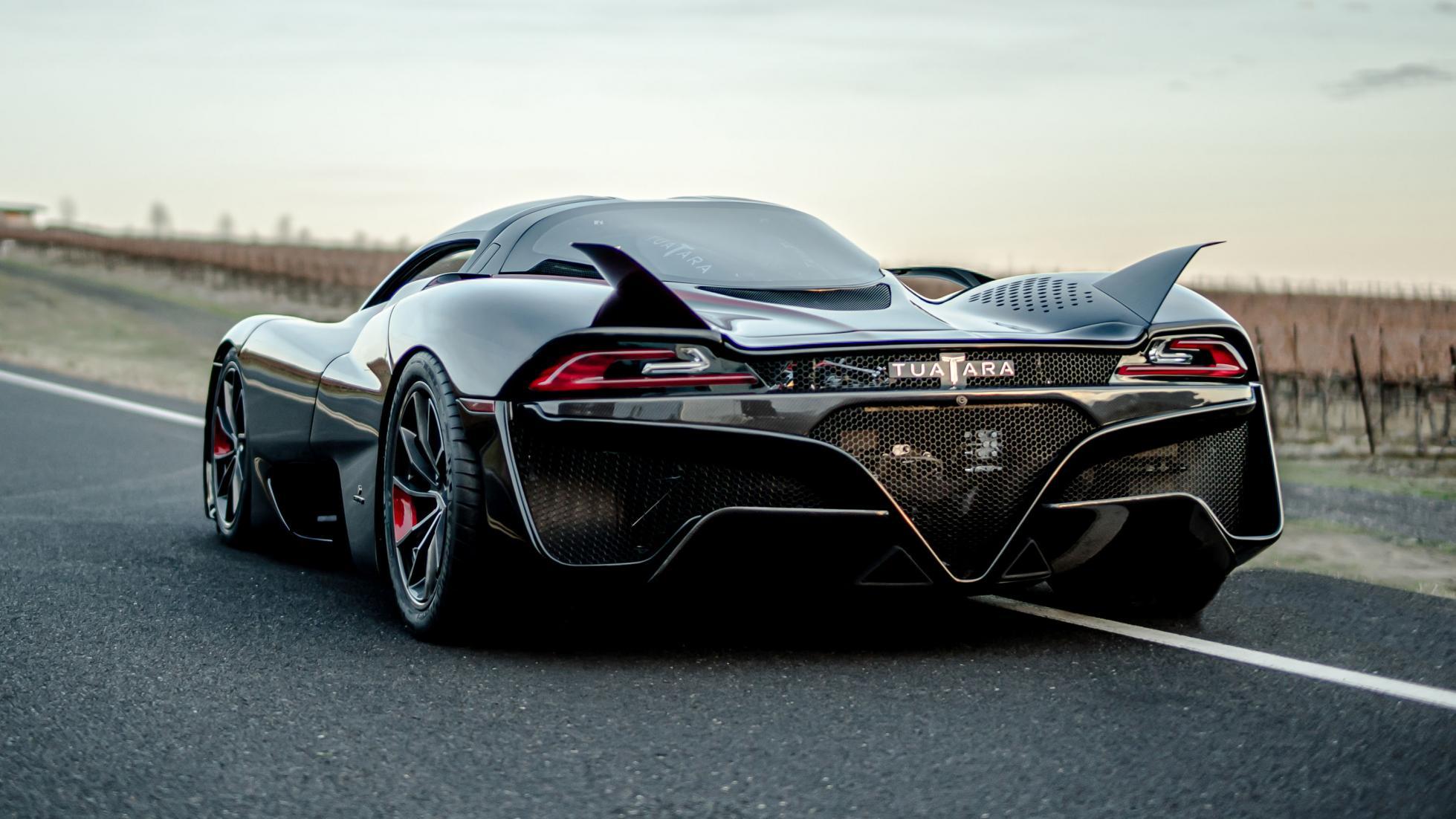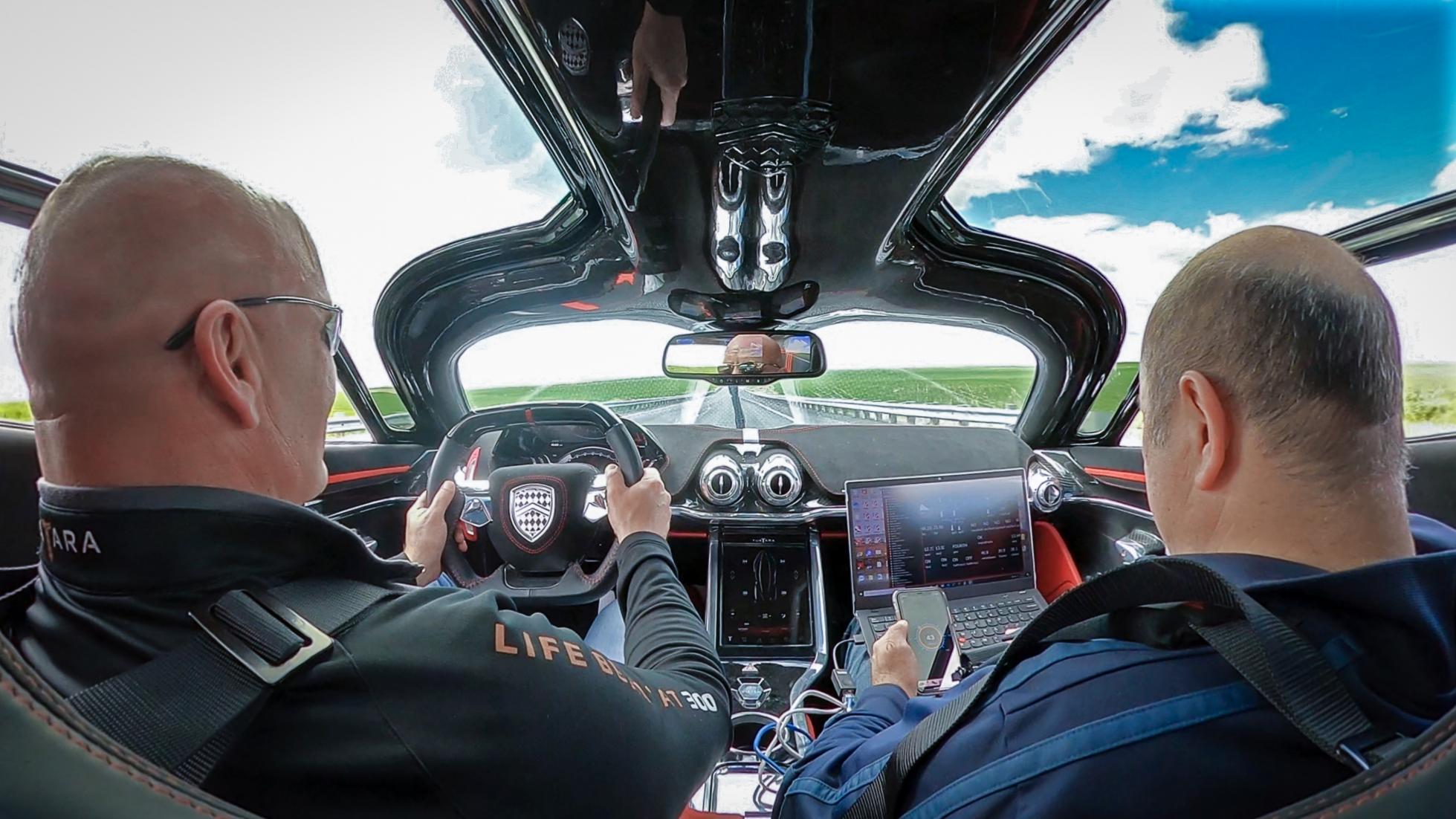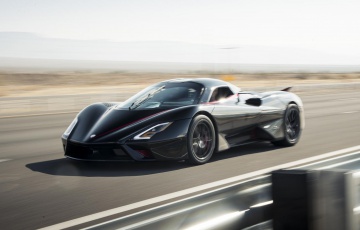7 things you need to know about the 1,775hp SSC Tuatara

It’ll do 95km/h-190km/h in TWO POINT FIVE SECONDS
That’s right. During a recent run, SSC’s master tuner read the data logs and discovered that for a few of the second-to-third-to-fourth gear testing runs, the mighty Tuatara covered off 95km/h to 190km/h in two and half seconds.
That’s… nuts. Read the full story HERE

It’ll produce 349kg of downforce at 500km/h
“We are extremely excited by the results of our two years of extensive simulations,” Shelby told TG, “but ultimately what matters is the two-way average we will run on real asphalt. I’ll just provide the engineering facts behind the Tuatara and we’ll let others have some fun and make their predictions as to what speed the Tuatara will achieve.”
It’ll produce 1,775hp, features a drag coefficient of 0.279 which rises to 0.313 at 500km/h, has a frontal area of 1.951 (M^2), weighs just 1,350kg, and produces 349kg of downforce at that 500km/h figure.

It can maintain its aero balance from 150km/h to top speed
“I am proud of the incredible job that Jason Castriota and his team did creating a beautiful and efficient design,” Shelby said. “Beyond the extremely low drag we achieved, we are also extremely proud of our active aero system which allows us to maintain the same aero balance of 37 per cent front, 63 per cent rear from 150km/h all the way up to the Tuatara’s top speed.
“This will not only ensure drivers will experience the same stability and predictability on a run up to top speed, but this also allows us to maximise traction and the use of the engine’s extreme power more efficiently. The motor is always 1,750bhp capable and that is the same horsepower that is on tap for every customer, so we predominantly run E85 fuel in our Tuataras for testing.
“We exceeded our drag coefficient goals, and our calculations show that we should only need around 1,490hp to achieve 500km/h. So we have the luxury of having nearly 280hp left on tap – just another perk of our team’s overarching “Exceed” mantra,” he added.

The Tuatara will be followed by a ‘little brother’
“The original plan is still in place, to follow up the Tuatara with a ‘little brother’ model that carries a similar DNA appearance and performance, but scaled down and priced in a range where a much larger portion of the population can purchase and enjoy it,” Shelby told TG.

Shelby designed and built every major component on the Tuatara
“There definitely were times during the marathon design process where I thought about the corners we could have cut by using someone else’s already proven component,” Shelby said.
“Engine, gearbox, chassis, intake system… I could go on and on, but that was never the intent of the project from day one, and in hindsight now, I’m really glad I stuck to my guns and we weathered those difficult phases that it took to create what I now feel will impress so many people in so many ways.”

Noise was a key parameter
“To me, in the hypercar market, sounds are extremely important and a big part of the overall experience that customers are paying top dollars for,” Shelby told TG.
“The sound of the door latching, the sound of the starter igniting the engine, the sound of the suspension actuating to a lower stance, and the precision-mechanical sound of robotic controlled shift are all very important parts of the experience to me.
“But the most important sound of all, and the one that seems to get the most attention, is the exhaust note. We spent years in development to create a very unique sound. I did not want the rumble of a muscle car and I did not want the scream of a Ferrari. I wanted something different and unique only to SSC and the Tuatara, and I think we have achieved just that.
“I am very happy with the unique sound that we have created, especially given that we had big challenges to get around the muffled-effect that turbos produce.”

Jerod Shelby does all the test driving himself
“I personally do 100 per cent of our development, tuning and calibration test driving,” he said. “Since this project is my dream and I have a very specific vision for what, ultimately, I want the customer’s experience to be, I don’t want to rely on second hand information or have to interpret what a test driver is trying to convey that he is observing and experiencing while methodically putting the car through all the daily test paces.”









